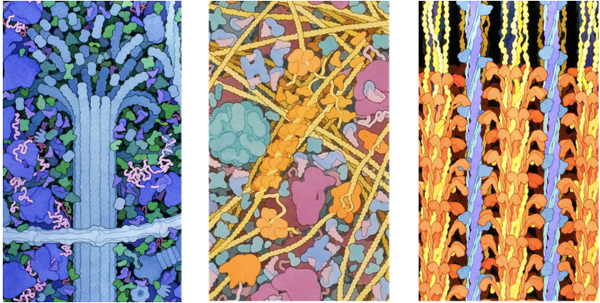BINANCE DE LA RED PI
IMAGEN DE BITCOIN SIN FONDO
Exploring polymorphism in oligomeric, macromolecular machines using integrative and interactive approaches
DIRECCIÓN BITCOIN CON SALDO

Many proteins can self-assemble into oligomeric filaments in order to make nanoscale scaffolds or parts of a molecular machine. Changes in the protein's monomer-monomer interfaces lead to different filament morphologies, which can be essential for motor function or for different scaffolding modes. Control of this morphology is then achieved by through application of mechanical forces or modifications of the environment, through salt composition, ligand concentration, monomer concentration, etc.
How the filament responds structurally to such external stimuli can be key to understanding its function. But a challenge for studying such nanoscale objects is to combine information obtained at very different spatial and temporal scales, from the atomic to the supramolecular, and which often calls for combined efforts from researchers in both experimental and theoretical fields.
A fundamental issue that arises when trying to integrate highly diverse information from different scientific domains is forming
meaningful cognitive representations that allow interpretation, reasoning, and insight.
The goal of FilaVISU is to bring together scientists working on such nanoscale systems but from distinct physical viewpoints.
This workshop offers oral presentations, stimulating discussion
and the possibility of interacting with one's own and others’ shared data using new integrative methodologies.
The FilaVISU workshop is hosted by the CNRS Laboratory for Theoretical Biochemistry at the Institut de Biologie Physico-Chimique (IBPC) in Paris. Available facilities there include:
- a 2m x 3m visualization wall set up for group viewing and manipulation of 3D structures
- linked stereo glasses
- virtual reality headsets with molecular visualization protocols
- an interactive server dedicated to generating and exploring filament geometries generated from pairs of interacting monomeric structures.
The workshop includes hands-on sessions to work with data from individual participants. We have also prepared a study system consisting of a fantastically complex nanoscale machine that is operating in our bodies all the time to keep our genome safe.
More information is avalaible in the Practical Sessions section.
Invited Speakers
| Edward Egelman - Keynote speaker | University of Virginia, USA |
| Pauline Dupaigne | Institut Gustave Roussy, France |
| Michael Nilges | Institut Pasteur, Paris |
| Steve Kowalczykowski | University of California, Davis USA |
| Chantal Prevost | CNRS, IBPC, Paris |
| Mara Prentiss | Harvard University USA |
| Satomi Inabae | Imperial College, UK |
| Hiroshi Iwasaki | Tokyo Tech, Japan |
| Wen Ma | UCSD, La Jolla USA |
| Támas Beke-Somfai | Hungarian Academy of Sciences, Budapest, Hungary |